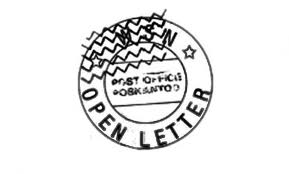 For the third year in a row, DonorDreams is proud to be hosting the Nonprofit Blog Carnival in May. On May 4, 2015, we published a call for submissions from non-profit bloggers across the blogosphere on the topic of “You are the future of philanthropy,” which stems from a 2007 TED Talks video presentation by Katherine Fulton. I asked bloggers to pontificate on any number of topics including the democratization of philanthropy, aggregated giving, social investing, and much more. If you are a blogger looking for more details, click here to read the May 4th call for submissions.
For the third year in a row, DonorDreams is proud to be hosting the Nonprofit Blog Carnival in May. On May 4, 2015, we published a call for submissions from non-profit bloggers across the blogosphere on the topic of “You are the future of philanthropy,” which stems from a 2007 TED Talks video presentation by Katherine Fulton. I asked bloggers to pontificate on any number of topics including the democratization of philanthropy, aggregated giving, social investing, and much more. If you are a blogger looking for more details, click here to read the May 4th call for submissions.
We will publish the May 2015 Nonprofit Blog Carnival on May 28, 2015 right here on the DonorDreams blog platform.
In addition to whipping the blogosphere up into a frenzy, we are dedicating our Tuesday and Thursday DonorDreams posts throughout May to people involved in local philanthropy. We’re videotaping donors, volunteers and non-profit professionals and asking them to answer the following question posed by Katherine Fulton at the end of her TED Talks presentation:
“Imagine 100 years from now and your grandchildren are looking at an old picture of you. What is the story? What impact did you want to have on the community around you? What impact did you make?”
Meet Stephen Taylor
Stephen Taylor opened his non-profit consulting practice, Taylor Philanthropic Services, in early 2015, but he has worked in the non-profit sector for a lifetime. Starting in 1976, he joined the Boy Scouts of America as a District Executive and worked his way up all the way up the org chart to council Scout Executive, which is where he served three councils in Mount Prospect, IL; Spartanburg, SC; and Alexandria, LA. After 36 years and retiring from the BSA in 2012, he had stops at Bell Fundraising Consultants and DayOneNetwork.
Stephen is a CFRE who loves philanthropy. He co-chaired the Fox West Philanthropy Network’s Philanthropy Day in 2013 and 2014.
For all of these reasons, we thought we’d ask him to take a crack at answering the question that Katherine Fulton posed at the end of her TED Talks presentation.
Stephen’s philanthropy story?
(Note: If you receive DonorDreams via email you may need to click here to view today’s video interview.)
Stories from your community?
Katherine Fulton says in her TED Talks presentation:
“We have a problem. Our experience to date both individually and collectively hasn’t prepared us for what we’re going to need to do or who we’re going to need to be. We’re going to need a new generation of citizen leaders willing to commit ourselves to growing and changing and learning as rapidly as possible.”
Have you met someone in your community who you think embodies the future of philanthropy and is a member of a new generation of citizen leaders? If so, please scroll down and use the comment box to tell us about that person.
Here’s to your health!
Erik Anderson
Founder & President, The Healthy Non-Profit LLC
www.thehealthynonprofit.com
erik@thehealthynonprofit.com
http://twitter.com/#!/eanderson847
http://www.facebook.com/eanderson847
http://www.linkedin.com/in/erikanderson847



 I first met Noel more than a year ago when I signed a capacity building contract with
I first met Noel more than a year ago when I signed a capacity building contract with  John is the other marketing guy who has been in my life for the last year.
John is the other marketing guy who has been in my life for the last year. For the last few decades, I’ve been on a quest to become more productive with the time I’ve been given. My counselor introduced me to the idea of
For the last few decades, I’ve been on a quest to become more productive with the time I’ve been given. My counselor introduced me to the idea of  On March 28, 2012, I published a blog post titled “
On March 28, 2012, I published a blog post titled “ I remember it like it was just yesterday. In 2006, I started a new job working for a national non-profit organization providing resource development capacity building services to local affiliates. On Day One, I received my first ever “smart phone,” and I thought I had died and gone to heaven.
I remember it like it was just yesterday. In 2006, I started a new job working for a national non-profit organization providing resource development capacity building services to local affiliates. On Day One, I received my first ever “smart phone,” and I thought I had died and gone to heaven. Those of you who regularly follow this blog know that every post in May 2014 was dedicated to the idea of how non-profit organizations build loyalty among various stakeholder groups (e.g. donors, board members, staff, volunteers, clients, etc). All of those posts culminated yesterday when DonorDreams blog hosted this month’s
Those of you who regularly follow this blog know that every post in May 2014 was dedicated to the idea of how non-profit organizations build loyalty among various stakeholder groups (e.g. donors, board members, staff, volunteers, clients, etc). All of those posts culminated yesterday when DonorDreams blog hosted this month’s  Enjoy the reading!
Enjoy the reading! Welcome to May! While this month represents lots of things to lots of people (e.g. rain, flowers, planting gardens, non-profit conferences, etc), May is an anniversary month for
Welcome to May! While this month represents lots of things to lots of people (e.g. rain, flowers, planting gardens, non-profit conferences, etc), May is an anniversary month for  Approximately 14 years ago, I was a young and eager executive director of a non-profit organization in Elgin, Illinois. While I had already worked in a number of different capacities in the non-profit sector, it was the first time I had held the job of “executive director.” Thinking back to that time in my life is where I pull my inspiration for the May 2014
Approximately 14 years ago, I was a young and eager executive director of a non-profit organization in Elgin, Illinois. While I had already worked in a number of different capacities in the non-profit sector, it was the first time I had held the job of “executive director.” Thinking back to that time in my life is where I pull my inspiration for the May 2014 
 How to submit your work for consideration?
How to submit your work for consideration? Miscellaneous details?
Miscellaneous details? My online friend, Marc Pitman is hosting this month’s Nonprofit Blog Carnival and asks his fellow non-profit bloggers to write an open letter to executive directors in honor of President’s Day. For those of you who don’t know of Marc, he is well-known to friends and business associates as “The Fundraising Coach“. As the coach describes in his
My online friend, Marc Pitman is hosting this month’s Nonprofit Blog Carnival and asks his fellow non-profit bloggers to write an open letter to executive directors in honor of President’s Day. For those of you who don’t know of Marc, he is well-known to friends and business associates as “The Fundraising Coach“. As the coach describes in his 




